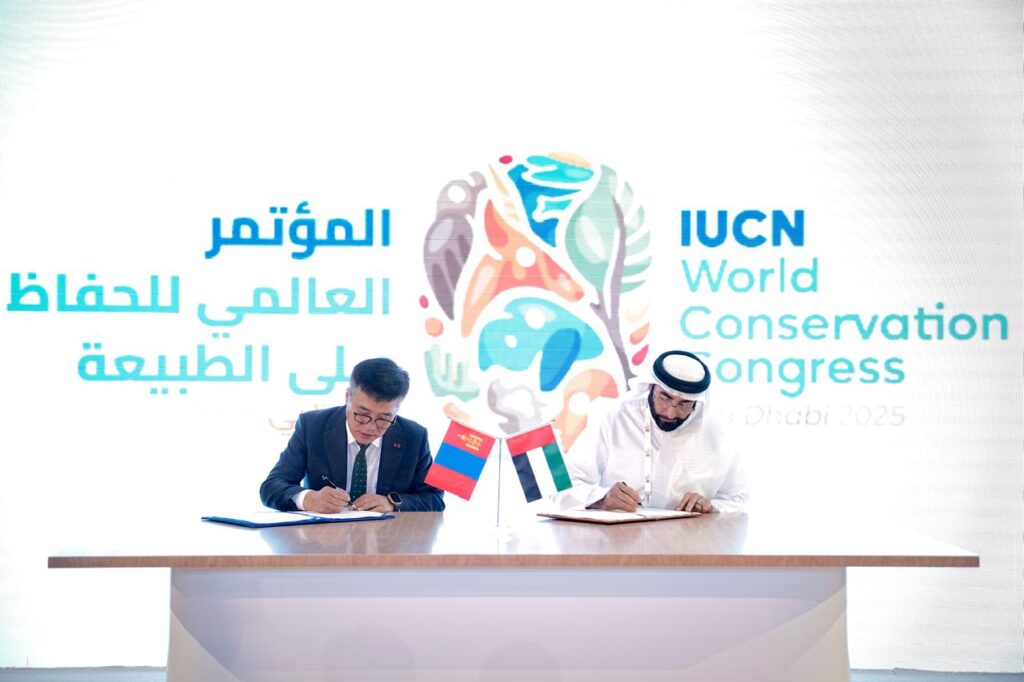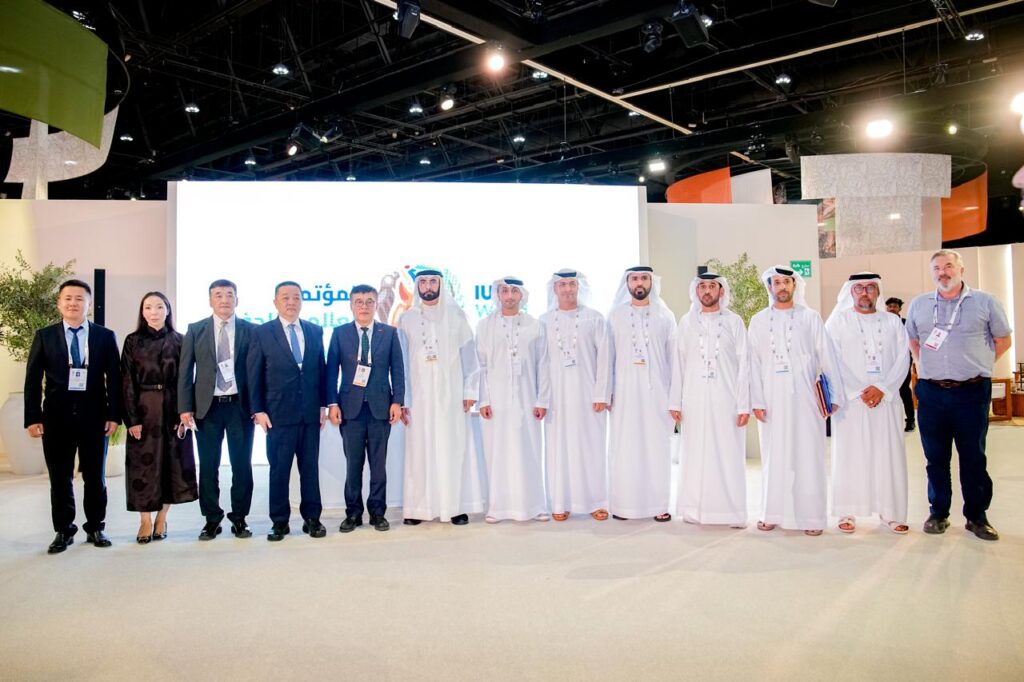Abu Dhabi — October 14, 2025 — The Mohamed bin Zayed Raptor Conservation Fund (MBZRCF) today announced a five-year Memorandum of Agreement with the Ministry of Environment and Climate Change of Mongolia to expand collaborative conservation, research, mitigation of dangerous powerlines, and capacity-building for raptors across Mongolia’s steppe landscapes. The signing took place at the IUCN World Conservation Congress in Abu Dhabi (9–15 October 2025), the world’s foremost gathering on nature conservation.
“Together with our Mongolian colleagues, we have demonstrated that science, infrastructure innovation, and community partnership can save raptors at national scale,” said H.E. Abdulla Ahmed Al Qubaisi, Managing Director of MBZRCF. “This new five-year agreement allows us to deepen that collaboration—protecting Mongolia’s national heritage while keeping its electricity grid safe and reliable. We are proud that Mongolia’s program now stands as the single largest raptor-electrocution mitigation effort in history, a model that other countries can follow. We also look forward to showcasing how this practical conservation work contributes to combating desertification and to meeting international obligations for species protection.”

Why this matters
When this work began in Mongolia, power-line electrocution was estimated to kill ~18,000 raptors annually, including ~4,000 Saker Falcons. In regions such as Africa—where unsafe distribution lines have decimated perch-hunting raptors—the success of Mongolia’s nationwide program provides a practical, scalable exemplar for utilities and governments to sharply cut electrocutions at national scale. Against this backdrop, the Mongolia program is both transformative and exceptional, demonstrating how coordinated science, policy, and infrastructure upgrades can reverse avoidable losses.
By the numbers (Mongolia program to date)
- 5,000 artificial nests installed, enabling ~30,000 Saker Falcons to fledge and establishing stable breeding hubs at landscape scale.
- 27,000 dangerous poles retrofitted over ~3,000 km, addressing ~80% of high-risk areas and reducing electrocution by ~95%—the largest raptor-electrocution mitigation project ever undertaken.
- ~20 Mongolian raptor experts trained over two decades, now leading national mitigation, research, and monitoring.
- Long-term collaboration with the Mongolian Bird Conservation Center, plus a robust student pipeline with the National University of Mongolia, and international exchange with Wageningen University.
- Cutting-edge research on predator–prey dynamics (including Brandt’s voles) using GPS/accelerometers, automated monitoring, and analytics—informing practical strategies to reduce grassland degradation.
- Community partnerships with herders, government, utilities, and the private sector to protect wildlife, safeguard the grid, and build grass-roots conservation ethics among young Mongolians.
- Outcomes that support Mongolia’s national obligations under international agreements such as CITES and CMS, and that can be showcased as practical contributions to combating desertification.

About the Mohamed bin Zayed Raptor Conservation Fund
Founded in 2018 in Abu Dhabi, the Mohamed bin Zayed Raptor Conservation Fund develops transformative, innovative solutions to the key threats facing raptors worldwide—advancing species conservation, applied research, global partnerships, and training for future conservation leaders.
Media Contact
Communications Office, MBZRCF
Email: info@mbzraptorfund.org | Phone: +971-2-877-0757